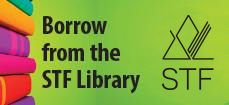Read and demonstrate comprehension of grade-appropriate literary and informational texts read silently and orally by relating and retelling key events and ideas in sequence with specific details and discussing how, why, and what if questions.
| (a) |
Read and understand a variety of grade-level-appropriate narrative and informational texts including legends, traditional stories and folktales, poetry, environmental print, and predictable books including First Nations and Métis resources. |
| (b) |
Select and use task-relevant before, during, and after strategies to construct meaning when reading. |
| (c) |
Understand and apply the appropriate cues and conventions (pragmatic, textual, syntactical, semantic/lexical/morphological, graphophonic, and other) to construct and confirm meaning when reading. |
| (d) |
Read and retell (with support from the text) the key events and elements of a story (including setting, characters, character traits, problem and solution, and sequence of events). |
| (e) |
Read and retell the key ideas and elements (including main idea, supporting details, diagrams, headings, table of contents, glossary) of informational texts including First Nations and Métis resources. |
| (f) |
Read aloud with fluency, expression, and comprehension any familiar text that is appropriate for grade 2. |
| (g) |
Follow written instructions. |
| (h) |
Read appropriate fiction and non-fiction texts at a reasonable rate (70-100 wcpm orally; 95-145 silently) with fluent pacing on practiced texts. |
| (i) |
Read familiar poem aloud with expression and attention to flow. |
| (j) |
Read most texts silently. |














